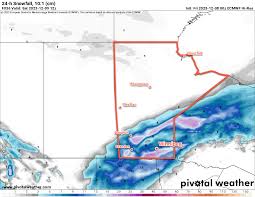What You Need to Know About Haboobs

Introduction to Haboobs
Haboobs, the intense dust storms that dominate arid regions, particularly in the Middle East, have garnered increased attention due to their potential impact on climate, health, and air quality. These storms occur when strong winds sweep across the ground, lifting large amounts of dust and sand into the air. As climate change progresses and desertification spreads, understanding Haboobs becomes increasingly critical for residents in affected areas and those involved in environmental research.
The Formation of Haboobs
Haboobs typically form when a cold downdraft from a thunderstorm pushes outwards, raising dust and debris into the atmosphere. This phenomenon is most common in the summer months in regions such as the Sahara Desert and the southwestern United States, including Arizona and New Mexico. The structure of these storms can vary greatly, with some developing rapidly while others can linger for prolonged periods.
Recent Events and Impact
In August 2023, a significant haboob swept through Phoenix, Arizona, reducing visibility to near zero for several hours. The storm was accompanied by winds that reached speeds of up to 60 miles per hour, uprooting trees and causing power outages across the city. Local emergency services reported a spike in respiratory issues and other health problems during and after the storm due to the dust particles that were significantly high in the atmosphere.
This particular event mirrors other global occurrences, including an especially severe haboob in Iraq earlier this year, which prompted warnings for air travel and health advisories for vulnerable populations. These recurring events highlight the growing concern regarding how climate change and urbanization influence the frequency and intensity of such storms.
Health and Environmental Implications
The environmental and health implications of haboobs are substantial. Dust storms can carry pollutants and allergens, contributing to respiratory problems and other health issues. Furthermore, the dust deposited by haboobs can impact agriculture by affecting soil quality and crop yield. As our understanding of these phenomena expands, researchers are exploring how predictive models can improve community preparedness and response.
Conclusion: Implications for the Future
As climate change continues to alter weather patterns, the frequency and intensity of haboobs may increase, demanding attention from policymakers and researchers alike. Enhanced forecasting systems could mitigate their impact by preparing communities for these storms. With ongoing research, there is hope for developing effective strategies to manage the effects of haboobs, securing healthier environments for those in vulnerable regions.









